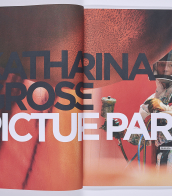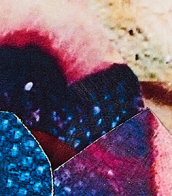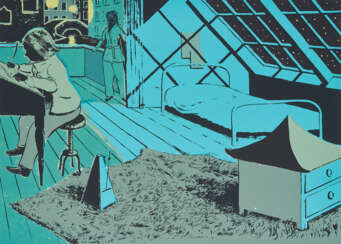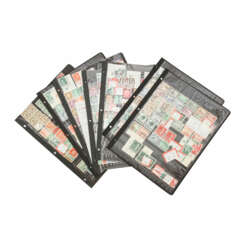drucke & poster

Richard Serra was a prominent American sculptor, renowned for his monumental steel sculptures that transform viewers' perceptions of space and environment. Born on November 2, 1938, in San Francisco, California, Serra pursued his education in Art History and Fine Arts at Yale University, where he graduated with a BA and an MFA in 1964. His early career was marked by experimentation with nontraditional materials such as rubber, neon, and lead, reflecting a departure from traditional sculptural forms towards more abstract expressions.
Serra's work is characterized by its engagement with the physical properties of his materials and the spatial dynamics of his installation sites. He is perhaps best known for "Tilted Arc" (1981), a controversial installation in New York City's Federal Plaza, which was eventually removed following public debate over its presence. Despite the controversy, "Tilted Arc" exemplifies Serra's interest in site-specificity and the relationship between artwork, site, and viewer.
Throughout his career, Serra's sculptures have been exhibited globally, with significant works like "Snake" (1994-97) at the Guggenheim Bilbao and "Torqued Ellipse" series, reflecting his ongoing exploration of curvilinear forms and the interaction between space, viewer, and sculpture. His contributions to art have been acknowledged with awards such as the Praemium Imperiale in 1994.
For collectors and experts in art and antiques, Serra's work represents a pivotal shift in contemporary sculpture, emphasizing the materiality and physical engagement of artworks within their environments. To stay updated on exhibitions and auction events related to Richard Serra's influential sculptures, signing up for updates is highly recommended, ensuring enthusiasts are informed about the latest developments and opportunities to engage with his groundbreaking work.

Jim Dine is an American artist whose œuvre extends over sixty years. Dine’s work includes painting, drawing, printmaking (in many forms including lithographs, etchings, gravure, intaglio, woodcuts, letterpress and linocuts), sculpture and photography; his early works encompassed assemblage and happenings, while in recent years his poetry output, both in publications and readings, has increased.


Keith Allen Haring was an iconic American artist, recognized globally for his distinctive contributions to painting, sculpture, and art culture. Haring's work is celebrated for its vibrant, dynamic imagery and its profound social activism, which addressed critical themes such as AIDS awareness, racial inequality, and the empowerment of communities through art. His art transcends conventional galleries, marking its presence in public spaces, museums, and collections worldwide, thereby democratizing art access and engagement.
Haring's unique approach to art was characterized by bold lines, vivid colors, and animated figures, which not only attracted art collectors and experts but also resonated with a broader audience. His ability to blend art with activism, using public spaces as his canvas, was revolutionary. Works like the "Crack is Wack" mural and the untitled piece on the Berlin Wall stand testament to his commitment to societal issues, making him a pioneer in using art as a tool for social change.
Keith Haring's legacy continues through the Keith Haring Foundation, established by the artist in 1989 to support children's programs and organizations dedicated to raising AIDS awareness. The Foundation ensures that Haring's artistic and philanthropic vision persists, facilitating exhibitions and educational initiatives. For collectors and art experts keen on exploring Haring's influential body of work and its impact on contemporary art and culture, his creations offer profound insights into the intersection of art, social activism, and community engagement.
For those interested in staying informed about new product sales, auction events, and exhibitions related to Keith Allen Haring, signing up for updates is a straightforward way to remain connected with the ongoing celebration of his art and humanitarian legacy. This subscription ensures direct access to the latest on Haring's impactful contributions to the world of art and culture.


Banksy is a pseudonymous England-based street artist, political activist and film director whose real name and identity remain unconfirmed and the subject of speculation. Active since the 1990s, his satirical street art and subversive epigrams combine dark humour with graffiti executed in a distinctive stenciling technique. His works of political and social commentary have appeared on streets, walls and bridges throughout the world. Banksy's work grew out of the Bristol underground scene, which involved collaborations between artists and musicians. Banksy says that he was inspired by 3D, a graffiti artist and founding member of the musical group Massive Attack.


Peter Behrens was a seminal figure in modern design and architecture, heralded as the first industrial designer and a pioneer in modernist architecture. Born in Hamburg, Germany, Behrens's influence spanned across various domains, including architecture, industrial design, and graphic design. His holistic design approach was revolutionary, encompassing everything from architectural projects to corporate identities.
Behrens's association with AEG (Allgemeine Elektrizitäts-Gesellschaft) marked a significant chapter in his career. Hired as an artistic consultant in 1907, he crafted a comprehensive corporate identity for AEG, including the iconic AEG Turbine Factory (1909), a hallmark of industrial classicism and modernism. This work is celebrated for its pioneering approach to industrial architecture and design, integrating form and function with unprecedented clarity and coherence.
His architectural ventures displayed a versatility and an evolution of style, from the monumental, stripped classical form seen in the German Embassy in St Petersburg (1912) and the Administration Building for Continental AG in Hannover (1912-1914), to the expressive Brick Expressionism of the Technical Administration Building of Hoechst AG in Frankfurt (1920-1924). Behrens's work in the 1920s, including the design for the 'New Ways' house in Northampton, UK, and contributions to the Weissenhof Estate in Stuttgart, underscored his shift towards New Objectivity and modernist principles.
Moreover, Behrens's educational contributions were profound, with his teaching stints at the Academy of Fine Arts Vienna influencing a new generation of architects, including luminaries such as Ludwig Mies van der Rohe, Le Corbusier, and Walter Gropius, who would themselves go on to define the course of 20th-century architecture.
Behrens's legacy is a testament to the transformative power of design, illustrating how integrated and forward-thinking approaches can redefine our built environment and the objects we use daily. His work remains an essential study for collectors, experts in art and antiques, and anyone interested in the evolution of modern design and architecture.
For updates on exhibitions and auctions featuring Peter Behrens's work, sign up for our newsletter. Stay informed about new discoveries, sales, and events related to this pivotal figure in modern architecture and design.


Joan Miró, a celebrated Spanish artist, was a master in painting, sculpture, and ceramics, renowned for his unique style that blurred the lines between Surrealism, Fauvism, and Expressionism. Born in Barcelona to a family of a goldsmith and a watchmaker, Miró grew up immersed in the rich cultural heritage of the Barri Gòtic neighborhood. His artistic journey began with drawing classes at the age of seven and continued at the prestigious La Llotja art academy. Despite an initial venture into the business world, Miró's passion for art prevailed, leading him to abandon his clerical career after a nervous breakdown.
Miró's work is noted for its exploration of the subconscious, often depicting a childlike perspective. This approach was both a critique of traditional painting methods and a means of expressing Catalan pride. His art, challenging to categorize, often featured symbolic elements and nationalistic qualities. One of his notable early works, "The Farm," reflects a transition to a more individual style, blending elements of his Catalan roots with broader artistic influences. This piece, later purchased by Ernest Hemingway, encapsulated the essence of Spain in its imagery.
In Paris, Miró joined the Surrealist movement in 1924, where his work began to reflect the influence of automatism, emphasizing spontaneous, automatic, or subconscious creation. He experimented with various mediums, including painting-poetry and collage, and even ventured into set and costume design for Sergei Diaghilev's Ballets Russes.
During World War II, Miró remained in Spain, and his work from this period, including the 22 Constellations series, reflected an interest in the night, music, and stars. His forms became increasingly abstracted, and he experimented with various techniques, often incorporating primary colors and evocative titles.
Miró's career spanned several decades, during which he continually evolved his style and explored new mediums. His contributions to art were recognized with numerous awards and retrospectives, including a major career retrospective at MoMA in 1941 and the Spanish Gold Medal for Fine Arts in 1980. Among his last major works was a tapestry for the World Trade Center in New York City, created in 1974.
For art collectors and enthusiasts, Joan Miró remains a figure of immense interest, not only for his distinct style and contributions to Surrealism but also for his ability to blend poetic imagery with political commentary. To stay updated on new product sales and auction events related to Joan Miró, sign up for our updates and immerse yourself in the world of this extraordinary artist.


Katharina Fritsch is a German sculptor who lives and works in Düsseldorf, Germany.
She studied at the Düsseldorf Academy of Art and became known for her iconic and unusual sculptures and installations.
Fritsch's work often evokes disturbing religious or quasi-spiritual associations and is deeply psychological, as if she were trying to give an image to our deepest fears, extracted from the world of myth, religion, cultural history and everyday life. One of her most impressive works, Rat King (1993), is a circle of sixteen giant rats, each nearly ten feet tall, with their tails tied in a massive knot in the center.


Mary Hildegard Ruth Bauermeister was a German artist who worked in sculpture, drawing, installation, performance, and music. Influenced by Fluxus artists and Nouveau Réalisme, her work addresses esoteric issues of how information is transferable through society. Beginning in the 1970s, her work concentrated on the themes surrounding New Age spirituality, specifically geomancy, the divine interpretation of lines on the ground.


Tilo Baumgärtel is a German artist who lives and works in Leipzig.
His paintings go back to the works of social realism and large-format propaganda posters. The artist works with a variety of mediums and techniques. In addition to painting, he also uses lithography, drawings on paper, and video. Pictorial space and the creation of sometimes surrealistic landscapes is one of his central themes.
Tilo Baumgärtel also collaborates with theaters, developing sets and videos on scenography.











































































